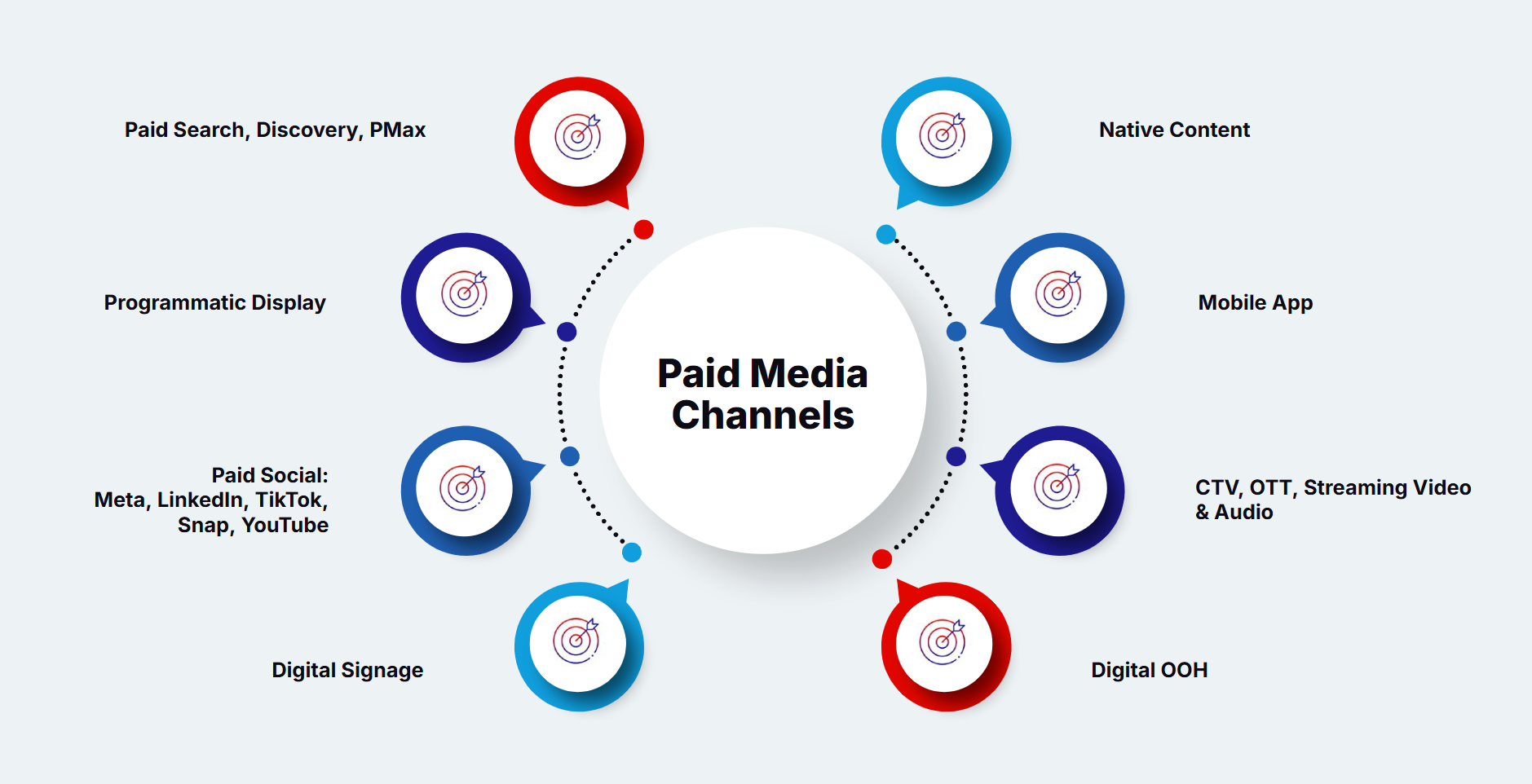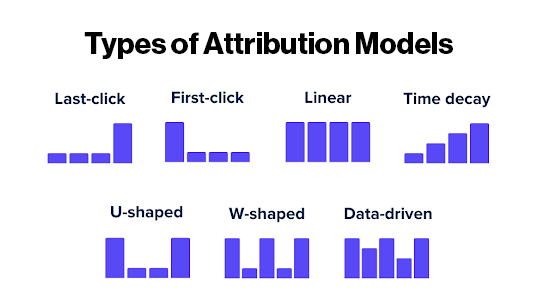A well-structured patient acquisition strategy helps healthcare companies build brand awareness, reach new consumers, and drive booked appointments. However, if you’re overly invested in one channel, it’s common to see performance eventually plateau. To sustain growth and hit your performance benchmarks, you need to expand strategically—diversifying your media mix ensures you’re not over-relying on a single channel, mitigating diminishing returns, and driving incremental patient volume where it matters most.
Table of Contents
Marketers often hit the ceiling with their existing channels and wonder how they can expand efficiently. Two of the most common questions I’ve been asked in this area are:
- How do you expand into new channels strategically?
- How do you measure if a new channel is truly driving business impact?
This can be a complex topic, but delving into it will reveal answers that may help your provider group expand into new channels with great results. To help you understand how to plan your channel expansion strategy and put it into action, I’ll cover several key areas in this blog post. These include:
- Understanding your marketing maturity level
- Identifying your need for expansion
- Developing a test strategy
- Beginning your expansion
- Monitoring and evaluating performance
By the time you reach the end, you’ll have a better understanding of how to expand media confidently and effectively.

Understanding Marketing Maturity Level
For healthcare organizations, there is no one-size-fits-all strategy for building an effective marketing channel mix. Different approaches work for different companies based on market, brand awareness, budget, and other key factors. This is why I always recommend that you start with your goals and work backward.
However, there are still some best practices that all healthcare organizations can apply to their marketing:
- Start simple: Begin by investing in high-intent channels, such as Google Search, as this can help you capture immediate demand.
- Know when to upgrade: After you’ve maxed out performance on bottom-funnel channels, branch out into upper-funnel demand generation channels.
- Recognize key guiding factors: Try to identify unique marketing nuances based on your current brand awareness, company-wide objectives, expansion plans, etc.
- Develop strategies for existing vs. de novo practices: The right marketing channel mix will be dependent on the practice location’s age—is it an existing location or a new one (“de novo”)?
Why Does Marketing Maturity Matter?
Marketing maturity shapes where and how you should invest. An established practice with strong brand awareness? Focus on high-intent search traffic. A new market entry? Prioritize upper-funnel channels like Google PMAX and Meta to build awareness.
Technology maturity is just as critical. Without HIPAA-compliant call tracking or online booking, you won’t capture the right conversion data to optimize performance. Before expanding into new channels, ensure you have the right martech stack and data processes in place.
The bottom line: Know where you stand. A clear understanding of your marketing maturity will help you confidently expand your media mix.
Identify the Need for Expansion
It’s vital that you recognize when your current marketing channels are approaching their limit for growth potential. This often becomes apparent when certain existing channels, such as paid search, are maxed out. If you try to keep pushing one of these channels further, you may waste time, money, and effort working towards results that are unlikely to surface.
“When you start hitting diminishing returns on search, where every click costs that much more, and your conversion rates are decreasing because you’re bidding on less effective keywords. Or when your impression share lost to budget starts going down to zero. That’s the moment to consider diversifying your channel mix because you’re more likely to find a lower incremental cost per lead compared to search.” —Alex Kemp, Senior Director of Applied Analytics, Cardinal Digital Marketing
How do you know if you’ve maxed out your performance on a particular channel? Here are three signs:
- High Absolute Top Impression Share (ATIS): You already appear in the top 1 – 2 ad positions consistently.
- Maxed Impression Share: Your Search Impression Share (IS) is above 90%, especially if your IS (budget) metric is at or near 0%.
- Conversion Rate Plateaus: You continue to optimize your landing pages, ad copy, and bidding strategies, but your conversion rates simply won’t improve anymore.
If any (or all) of these are familiar to you, then it’s likely you’re maxed out on a channel (or getting there).
Align with Goals and Develop a Test Strategy
When developing your plan, look beyond vanity metrics and even the common digital performance metrics that you might have relied on for some time. Instead, focus on your business, the people you’re dedicated to helping, and the business outcomes you want to achieve.
You need to explore three areas when building a test strategy:
- Consider actual business goals: Determine how many patients you need at each location and for which specific services to meet revenue and growth targets—then identify where current performance falls short.
- New patient volume and capacity: Look at your patient numbers per location—do you have as many as you need to generate the necessary revenue? Are you bringing enough people in through the doors for the services you offer, or are some virtually ignored? Consider the patient goals that are going unmet and how you can turn them around.
- Clarify purpose and growth: When you embrace channel expansion, what will that help you achieve? And how will it do that? Think about this in depth. Defining clear, realistic expectations is crucial to avoid disappointment.
When putting a channel expansion test into place, it’s important to gain stakeholder alignment on the goals and expected outcomes. Otherwise, this could lead to misunderstandings about potential, confusion when specific results aren’t achieved, and, ultimately, a lot of wasted time.
Once stakeholders are on board, create a detailed plan to outline the following elements for the new channel:
- Objectives
- Expectations
- Key performance indicators (KPIs)
Set a Test Budget
The next step is to agree on a test budget to manage risk and evaluate the channel’s performance before committing any more resources to it.
Start small: allocate just 10 – 15% of your budget to the test and keep it focused on a single campaign objective.
Roll Out the Expansion
It’s almost time to kick off your channel expansion. But before you dive in, make sure you follow these best practices:
Isolate the variables
Try not to make significant optimizations in existing channels simultaneously. This is important to gain as much clear insight and control as you can.
Crucially, only run the test during a period when you don’t expect major fluctuations in demand, such as holidays or when industry-specific trends take off.
Build a control group
Identify a baseline audience that isn’t exposed to the new channel. This will be your control group for the test.
If you can, split the test audience into segments (e.g., geographically, demographically, or by campaign exposure). This will help you achieve a broader audience overview and idea of the channel’s potential.
Use proper campaign tracking
Before you launch your expansion, determine how you’ll measure success. This has become more challenging since the 2022 HHS bulletin limiting tracking technology that combines PII and PHI. However, measurement is still possible with the right tools and strategies in place.
Additionally, make sure your new channel is tagged with Urchin Tracking Module (UTM) parameters for clean Google Analytics reporting. You should also check Google Ads Assisted Conversions or Meta Conversion Paths to find out if the channel contributes indirectly.
Compare against benchmarks and your control groups
The final step before you launch is to set realistic performance benchmarks based on your experience with similar channels or historical data. When studying historical data, though, remember that this can help you make predictions and estimations, but it doesn’t guarantee anything.
Monitor and Evaluate Performance
Once you roll out your channel expansion, assess its performance regularly. Establish checkpoints and a feedback loop matter; otherwise, you could miss key issues that could affect your expansion’s success. Integrate performance assessment into monthly reporting to make sure it meets your goals.
You should give the channel at least 30 to 90 days before scaling or cutting it. This should be enough time to gather meaningful data and make a sound judgment.
One key factor to consider here is the downstream impact. Your new channel might not start generating immediate conversions, but it could still assist other organic and paid marketing efforts. You must determine how you’ll measure whether the channel contributes.

However, some attribution models don’t always tell the full story. For example, traditional top-of-funnel models such as First Touch and U-shaped may not help you understand how social affects performance. Click-based attribution models are unsuitable for paid social marketing, as social campaigns primarily drive impressions and increase brand awareness.
With this in mind, it’s not always apparent that one channel is driving new business. Here are some ideas on things to look for:
- Avoid evaluating the new channel, especially paid social, in isolation.
- An increase in branded search traffic can indicate increased awareness.
- Improved conversion rates on non-branded search may signal better-qualified traffic.
Not every channel will drive direct conversions, but that doesn’t mean it’s not working. The key is to use a combination of methods to evaluate how performance shifts over time and across the entire funnel.
Adjust and Optimize
Now that you’re gathering and analyzing performance data, you’ll need to make certain adjustments to optimize the channel from time to time. Even if the results are positive, consider increasing the budget and expanding the channel further (if viable). Here are a few performance-based tips:
- When results are strong: Start scaling gradually. Increase your budget and monitor closely. In the beginning, roll out tests to similar markets and see if the performance trends continue.
- When results are mixed: Review the variables and confirm that there are no underlying issues that might affect performance. Determine if further optimizations to creative, landing pages, or audience targeting are worth exploring before making your final decision.
- When results are weak: If your new channel underperforms, identify whether it’s an execution issue or just a poor fit for your organization. This will help you make an informed decision about abandoning or continuing it.
Conclusion
Expanding into new paid media channels can be a daunting challenge for healthcare organizations, but it can generate incredible results when done right.
Thorough testing is critical to understand the best approach for your business, but in-depth planning should come first. And once you’re ready to expand, commit to close monitoring to measure performance and optimize campaigns effectively.
At Cardinal, we’re dedicated to helping you reach the right audience through the right channels, with strategies tailored to your budget, patients, and goals. To learn more about how we can help you, get in touch today.

